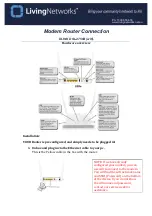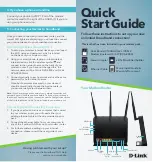
Basic Node
connection. The traffic is transmitted in both directions of the ring and the traffic
is received from two directions at the termination point.
In this solution, the ring network can tolerate one failure without losing
transmission. When the failure re-occurs, the affected connections are switched
in the other direction.
In a MINI-LINK TN R4 network, these ring structures can be built using PDH
Radio Terminals with capacities of up to 32x2 Mbit/s, and using SDH Radio
Terminals with the LTU 155 (STM-1 interface) with capacities up to 63x2 Mbit/s.
Capacity is distributed from a common feeder node to the ring nodes where it is
dropped off to star or tree structures as shown in Figure 45 on page 55.
As an example, consider the nodes
A
and
E
in Figure 45 on page 55. To
protect the connection from
A
to
E
the two alternative connections from
A
to
E
must be defined as a 1+1 SNCP group at
A
and as a 1+1 SNCP group at
E
.
Similarly, to protect the connection from
A
to
C
, the two alternative connections
between
A
and
C
must also be configured as two 1+1 SNCP groups at
A
and
C
.
6629
A
F
D
B
E
C
Figure 45
Example of ring protection with 1+1 SNCP
The 1+1 SNCP function can be used to build protection in more complex
topologies than rings, using the same principle.
55
12/221 02-CSH 109 32/1-V1 Uen A 2008-03-14
Summary of Contents for MINI-LINK TN R4 ETSI
Page 1: ...Technical Description MINI LINK TN R4 ETSI MINI LINKTM ...
Page 12: ...Technical Description 8 12 221 02 CSH 109 32 1 V1 Uen A 2008 03 14 ...
Page 128: ...Technical Description 124 12 221 02 CSH 109 32 1 V1 Uen A 2008 03 14 ...
Page 144: ...Technical Description 140 12 221 02 CSH 109 32 1 V1 Uen A 2008 03 14 ...
















































